CDH4
-
Official Full Name
cadherin 4, type 1, R-cadherin (retinal)
-
Overview
This gene is a classical cadherin from the cadherin superfamily. The encoded protein is a calcium-dependent cell-cell adhesion glycoprotein comprised of five extracellular cadherin repeats, a transmembrane region and a highly conserved cytoplasmic tail. Based on studies in chicken and mouse, this cadherin is thought to play an important role during brain segmentation and neuronal outgrowth. In addition, a role in kidney and muscle development is indicated. Of particular interest are studies showing stable cis-heterodimers of cadherins 2 and 4 in cotransfected cell lines. Previously thought to interact in an exclusively homophilic manner, this is the first evidence of cadherin heterodimerization. Three transcript variants encoding different isoforms have been found for this gene. -
Synonyms
CDH4; cadherin 4, type 1, R-cadherin (retinal); cadherin-4; R Cadherin; R-CAD; R-cadherin; retinal cadherin; cadherin 4, type 1, preproprotein; CAD4; RCAD; FLJ22202; FLJ40547; MGC126700; MGC138355;
- Recombinant Proteins
- Cell & Tissue Lysates
- Chicken
- Gallus gallus (Chicken)
- Homo sapiens (Human)
- Human
- Mus musculus (Mouse)
- Zebrafish
- E. coli
- E.coli
- E.coli expression system
- HEK293
- Human Cell
- Mammalian Cell
- Wheat Germ
- C
- His
- GST
- His|GST
- N/A
- N
| Species | Cat.# | Product name | Source (Host) | Tag | Protein Length | Price |
|---|---|---|---|---|---|---|
| Human | CDH4-610H | Recombinant Human CDH4 Protein, His/GST-tagged | E.coli | His/GST | Leu667~Asp916 |
|
| Human | CDH4-601H | Recombinant Human CDH4 protein, His-tagged | HEK293 | His | Met1-Ala734 | |
| Human | CDH4-0990H | Recombinant Human CDH4 Protein, GST-Tagged | Wheat Germ | GST |
|
|
| Human | CDH4-2723HCL | Recombinant Human CDH4 cell lysate | Human Cell | N/A |
|
|
| Human | CDH4-2788H | Recombinant Human CDH4 protein(761-840 aa), C-His-tagged | E. coli | C-His | 761-840 aa |
|
| Human | CDH4-1397H | Recombinant Human CDH4 Protein (Leu667-Asp916), N-GST tagged | E.coli | N-GST | Leu667-Asp916 |
|
| Gallus gallus (Chicken) | RFL35441GF | Recombinant Full Length Chicken Cadherin-4(Cdh4) Protein, His-Tagged | E.coli expression system | His | Full Length of Mature Protein (167-913) |
|
| Homo sapiens (Human) | RFL500HF | Recombinant Full Length Human Cadherin-4(Cdh4) Protein, His-Tagged | E.coli expression system | His | Full Length of Mature Protein (170-916) |
|
| Mus musculus (Mouse) | RFL28535MF | Recombinant Full Length Mouse Cadherin-4(Cdh4) Protein, His-Tagged | E.coli expression system | His | Full Length of Mature Protein (167-913) |
|
| Zebrafish | CDH4-4271Z | Recombinant Zebrafish CDH4 | Mammalian Cell | His |
|
|
| Zebrafish | CDH4-8712Z | Recombinant Zebrafish CDH4 | Mammalian Cell | His |
|
|
| Chicken | CDH4-1210C | Recombinant Chicken CDH4 | Mammalian Cell | His |
|
- Background
- Quality Guarantee
- Case Study
- Involved Pathway
- Protein Function
- Interacting Protein
- CDH4 Related Articles
- CDH4 Related Research Area
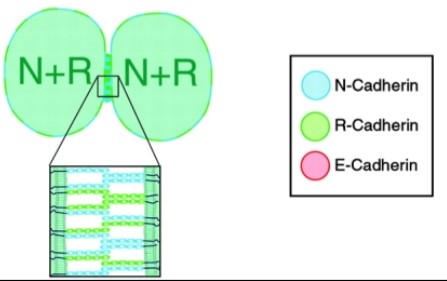
Fig1. Parallel heterodimers and homophilic interactions form between cadherins in R-/N-cadherin coexpressing cells. (W S Shan, 2000)
What is CDH4 protein?
CDH4 (cadherin 4) gene is a protein coding gene which situated on the long arm of chromosome 20 at locus 20q13. This gene is a classical cadherin from the cadherin superfamily. The encoded protein is a calcium-dependent cell-cell adhesion glycoprotein comprised of five extracellular cadherin repeats, a transmembrane region and a highly conserved cytoplasmic tail. This cadherin is thought to play an important role during brain segmentation and neuronal outgrowth. In addition, a role in kidney and muscle development is indicated. The CDH4 protein is consisted of 916 amino acids and its molecular mass is approximately 100.3 kDa.
What is the function of CDH4 protein?
CDH4 is an adhesion protein expressed at the junctions between cells and belongs to the cadherin family. It helps cells establish and maintain tight connections by binding to Cadherin 4 or other types of Cadherins on the surface of other cells. It can participate in the formation and maintenance of specific tissue morphology, and its expression patterns in various tissues play a key role in determining cell fate and tissue differentiation.
CDH4 Related Signaling Pathway
CDH4 binds to Cadherin molecules on other cells through its extracellular domain, thereby mediating adhesion between homogeneic and heterogeneic cells. This interaction can activate a variety of downstream signaling events, including regulating the organization of the cytoskeleton, influencing cell morphology, and controlling cell migration and proliferation. In the cell, the cytoplasmic tail of Cadherin 4 can interact with a variety of proteins, such as β-catenin, α-catenin, and other signaling molecules, and then connect to the actin cytoskeleton to participate in signal transduction. Cadherin 4 May also be involved in certain signaling pathways, such as the classic Wnt/ beta-catenin pathway, which plays a crucial role in cell fate determination and tissue regeneration.
CDH4 Related Diseases
Hereditary Diffuse Gastric Cancer (HDGC): Due to the mutation of CDH4 gene, the adhesion between intestinal epithelial cells is weakened, which increases the risk of cancer, especially gastric cancer. More types of cancer were also associated, including lung adenocarcinoma, liver cancer, and stomach cancer.
Bioapplications of CDH4
In recent years, researchers have developed antibody drugs that target CDH4 that block CDH4 interactions between tumor cells and surrounding normal cells, thereby inhibiting tumor invasion and metastasis. In addition, CDH4 has been used as a molecular marker for certain tumor subtypes, enabling individualized therapy.
High Purity
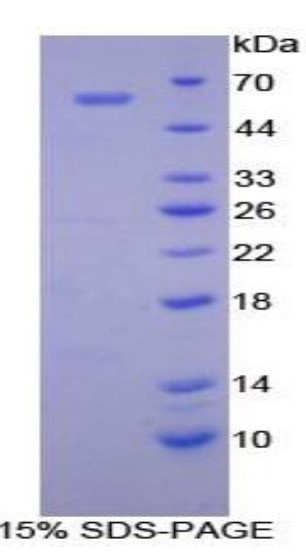
Fig1. SDS-PAGE (CDH4-610H) (PROTOCOL for western blot)
.
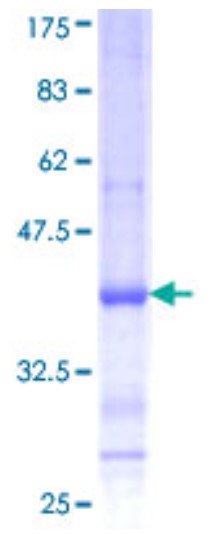
Fig2. SDS-PAGE (CDH4-0990H) (PROTOCOL for western blot)
Case study 1: Jian Xie, 2023
The cadherin-4 gene (CDH4), a member of the cadherin family genes, encodes R-cadherin (R-cad); however, the function of this gene in different types of cancer remains controversial. The function of CDH4 in OSCC (oral squamous cell carcinoma) is unknown.
The related cell function assay detected that CDH4 promotes the ability of cell proliferation, migration, self-renewal and invasion. Cell staining experiment confirmed that the change of CDH4 expression would change the cell mortality. The western blot of GPX4 (glutathione-dependent peroxidase-4), GSH (reduced glutathione) test assay and MDA(Malondialdehyde) test assay show that the expression of CDH4 may resist the sensitivity of ferropotosis in OSCC. High expression of CDH4 effectively promotes the proliferation, mobility of OSCC cells and reduce the sensitivity of OSCC cells to ferroptosis. CDH4 is positively correlated with EMT pathway genes, negatively correlated with fatty acid metabolism pathway genes and peroxisome pathway genes, and positively correlated with ferroptosis suppressor genes in OSCC.
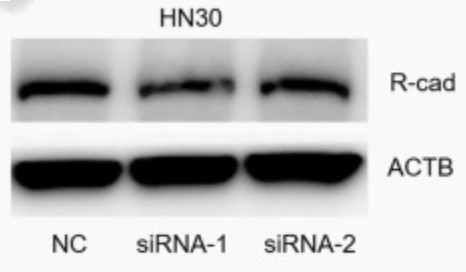
Fig1. CDH4 expression was effectively reduced by siRNAs as measured by western blot in HN30 cells.
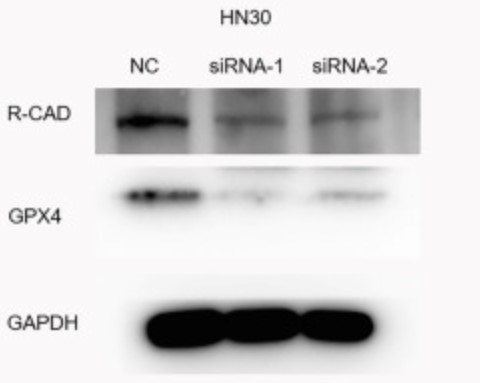
Case study 2: Emhonta Johnson, 2004
Classical cadherins are the transmembrane proteins of the adherens junction and mediate cell-cell adhesion via homotypic interactions in the extracellular space. In addition, they mediate connections to the cytoskeleton by means of their association with catenins. Decreased cadherin-mediated adhesion has been implicated as an important component of tumorigenesis. Cadherin switching is central to the epithelial to mesenchymal transitions that drive normal developmental processes. Cadherin switching has also been implicated in tumorigenesis, particularly in metastasis. Recently, cadherins have been shown to be engaged in cellular activities other than adhesion, including motility, invasion, and signaling. In this study, the researchers show that inappropriate expression of R-cadherin in tumor cells results in decreased expression of endogenous cadherins (cadherin switching) and sustained signaling through Rho GTPases. In addition, we show that R-cadherin induces cell motility when expressed in epithelial cells and that this increased motility is dependent upon Rho GTPase activity.
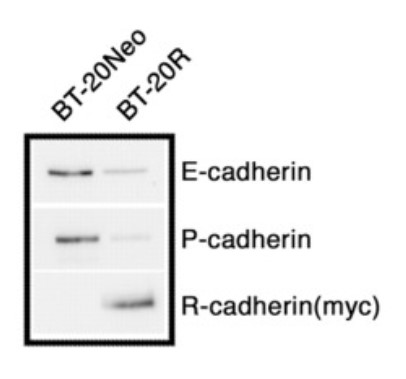
Fig3. Immunoblots. 40 μg of total protein were resolved by SDS-7% PAGE, transferred to nitrocellulose, and immunoblotted with antibodies against E-cadherin, P-cadherin, or R-cadherin(myc).
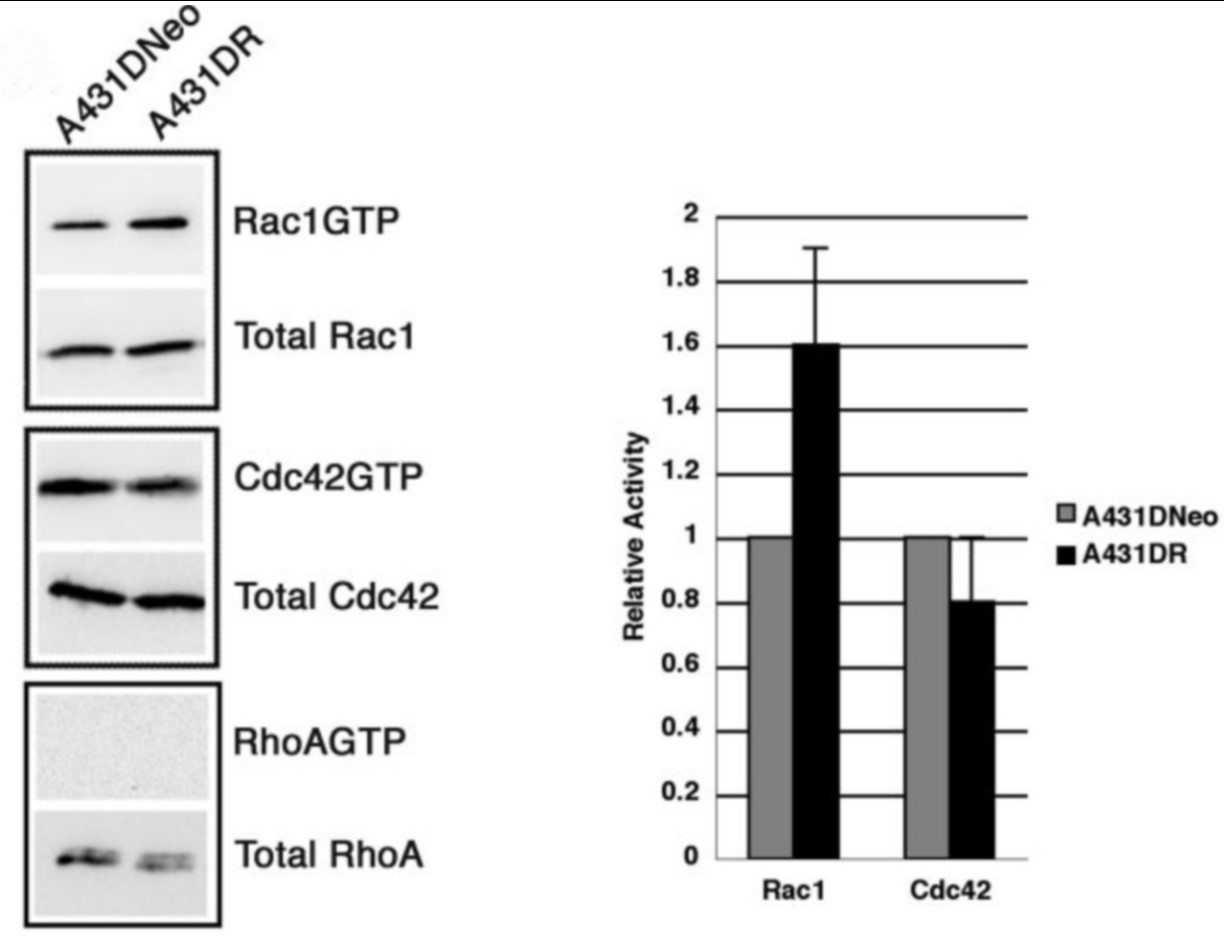
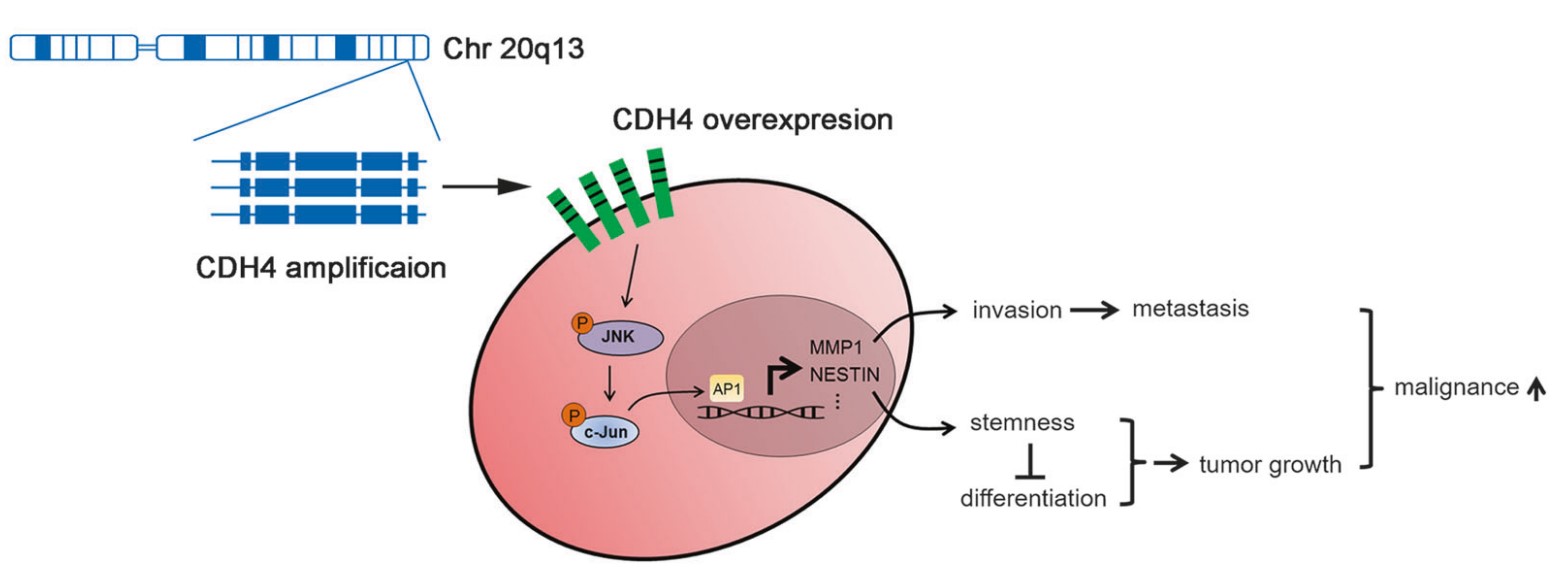
Fig1. Proposed model. Gene amplification-induced CDH4 overexpression activate the JNK pathway. (Qinglian Tang, 2018)
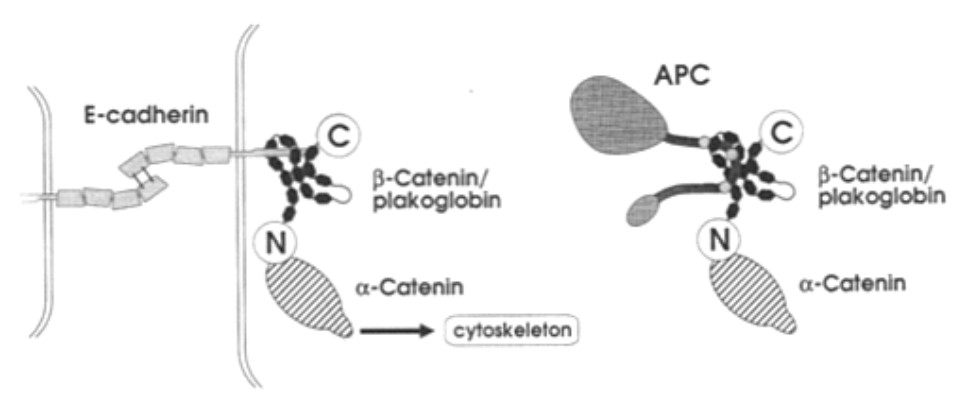
Fig2. Schematic representation of the E-cadherin and APC complexes with β-catenin or plakoglobin. (J Hülsken, 1994)
CDH4 involved in several pathways and played different roles in them. We selected most pathways CDH4 participated on our site, such as Adherens junctions interactions, CDO in myogenesis, Cell adhesion molecules (CAMs), which may be useful for your reference. Also, other proteins which involved in the same pathway with CDH4 were listed below. Creative BioMart supplied nearly all the proteins listed, you can search them on our site.
| Pathway Name | Pathway Related Protein |
|---|---|
| Adherens junctions interactions | CDH4;CDH12;CTNNB1;CDH6;CTNND1;PTBP3;JUPA;CDH7;CDH5 |
| CDO in myogenesis | TCF12;TCF3B;CTNNA1;MYOG;MEF2AA;TCF4;MEF2B;BNIP2;CDH4 |
| Cell adhesion molecules (CAMs) | CLDND;ITGB1A;CLDNK;OCLNA;LRRC4C;HLA-C;HLA-DRB5;ITGB8;MHC2DEB |
| Cell junction organization | PVRL2L;CDH12;LIMS1;CDH6;CADM2;CDH17;CDH4;CDH18A;PLECA |
| Cell-Cell communication | JUPA;CDH24;CDH11;DST;ANG;SPTBN1;ITGB1B.1;CDH10A;KIRRELB |
| Cell-cell junction organization | JUPA;CLDN3;CDH10;CDH3;CDH10A;PVRL1A;CTNND1;CDH5;CLDN7 |
| Developmental Biology | RND1L;KDR;MED8;SCN2A;SCN2B;DPYSL2;FGF10B;AP2M1;TRPC3 |
| Myogenesis | MYF6;SPAG9;TCF3B;BOC;CDON;MEF2AA;MYOG;MYOD1;CDH4 |
CDH4 has several biochemical functions, for example, calcium ion binding. Some of the functions are cooperated with other proteins, some of the functions could acted by CDH4 itself. We selected most functions CDH4 had, and list some proteins which have the same functions with CDH4. You can find most of the proteins on our site.
| Function | Related Protein |
|---|---|
| calcium ion binding | PCDHGA8;ANXA9;ITSN2B;MACF1;AP1S2;FLG2;LETM1;NCAN;S100A10 |
CDH4 has direct interactions with proteins and molecules. Those interactions were detected by several methods such as yeast two hybrid, co-IP, pull-down and so on. We selected proteins and molecules interacted with CDH4 here. Most of them are supplied by our site. Hope this information will be useful for your research of CDH4.
Dlg4
- Q&As
- Reviews
Q&As (6)
Ask a questionSome studies have suggested that the expression level of CDH4 may be related to drug resistance in tumor cells. CDH4 may affect drug sensitivity by regulating the signal transduction pathway of tumor cells or the expression of drug efflux pumps.
The interaction between CDH4 and other proteins is regulated by the formation of complexes or the regulation of signal transduction pathways. These interactions can be influenced by a variety of factors, such as ion concentrations, neurotransmitters, and growth factors.
Some studies have suggested that the expression level of CDH4 may be associated with the occurrence and progression of certain tumors. For example, in some cancers, the expression level of CDH4 may change.
CDH4 may play a variety of roles in cancer. Some studies have suggested that the expression level of CDH4 may be related to the proliferation, invasion, and metastasis of tumor cells. It may also be involved in regulating drug resistance and response to treatment in tumor cells.
The function of CDH4 can be studied by overexpression techniques, such as the use of gene transduction or viral transduction. These techniques can increase the expression level of CDH4 to observe its effects on cell growth, differentiation, and migration, among other things.
CDH4 can be studied by gene knockout or knockdown techniques, such as using techniques such as CRISPR-Cas9 or RNAi. These techniques can create cell models with CDH4 deletion or reduction to observe its effects on cell adhesion, growth, and differentiation, among other things.
Customer Reviews (3)
Write a reviewThe results of this protein experiment are highly reproducible.
CDH4 has the ability to inhibit or kill specific pathogens.
The detection method is very sensitive and can detect trace amounts of protein.
Ask a Question for All CDH4 Products
Required fields are marked with *
My Review for All CDH4 Products
Required fields are marked with *


